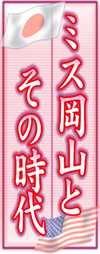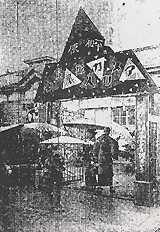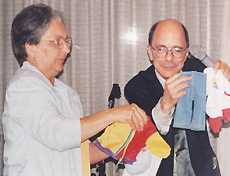"I deeply wish that your country and our country will be true friends forever." In March 1927, about 13,000 "Friendship Dolls" were given by America for Japan's Hina Matsuri (Doll Festival). American missionary Sidney Gulick (1860-1945), who promoted the sending of dolls, attached the message of friendship on each doll one by one. His grandson, Sidney Gulick, 3d, professor at the University of Maryland, has carried on the wish of his grandfather. Since 1986 he has visited Japan five times. Through dolls he has continued to engage in exchange activities in many places throughout Japan, and four years ago he reprinted the book entitled Dolls of Friendship, authored by his grandfather. This book had not been in print for 68 years. Mr. Gulick, 3d, says, "After my grandfather returned to America, even though he faced criticism, he preached Japanese-American friendship. 'I am a missionary to Japan who has been sent to America.' Even today the ideas in his books ring true." From 1888 Mr. Gulick stayed in Japan for 20 years. Besides his missionary work he served as an English teacher and in other jobs. He gave lectures at Doshisha University and at Kyoto Imperial University.
Author Eiko Takeda (71), an expert on the Japanese-American Friendship Dolls, points outs, "Based on Mr. Gulick's convictions as a minister and educator, he hoped to cultivate the seeds of friendship in the hearts of children. Choosing dolls to be that "bridge" demonstrates that he was supporter of Japan who understood traditional Japanese culture." America gave 238 dolls to Okayama Prefecture. On April 9, 1927, a welcoming ceremony took place at Fukane Elementary School in Okayama City (current name: Okayama Chuo Minami Elementary School). The "Messengers of Peace, American Doll Exhibit" was held at several places in the prefecture such as in the Kindergarten Attached to the Okayama Prefectural Women's Teaching School in Okayama City (current name: Kindergarten Attached to the Okayama University Education Department). The doll exchange in the mid-1920s was evidence of Japanese-American
friendship, but there was war between the two countries 14 years later. In Japan
there were also cases where the American dolls were destroyed as "enemy
dolls," and they disappeared from the kindergartens and elementary schools
to which they had been given.
(published September 27, 2001)
|



